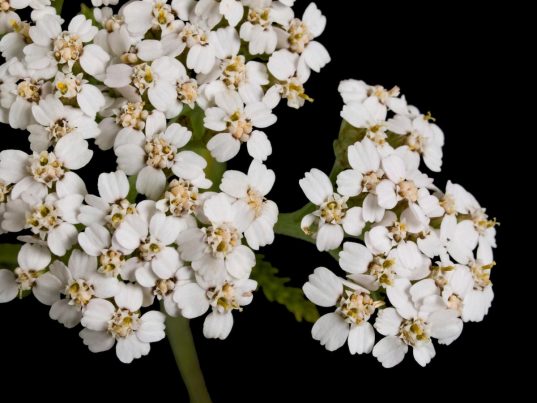23 Medicinal plants you need to know about when SHTF
Tuesday, May 16, 2017 by Earl Garcia
http://www.bugout.news/2017-05-16-23-medicinal-plants-you-need-to-know-about-when-shtf.html

Native Americans used a variety of herbal medicines for treating a plethora of illnesses. An article published in AskaPrepper.com listed 23 of the most commonly-used plants in the arsenal of Native American medicine.
- Blackberry – These antioxidant-rich berries were commonly used by the Cherokee people to treat an upset stomach. Blackberry tea is used to relieve swollen tissue and joints, and treat diarrhea. Blackberry root mixed with honey or maple syrup is a potent, all-natural cough syrup.
- Mint – The Cherokee brewed mint tea to relieve digestion problems.
- Yarrow – Ancient Greeks used yarrow to stem excess bleeding. The pioneers and Aborigines also used the plant as a poultice applied directly on open wounds to promote blood clotting.
- Rosemary – This plant is considered sacred among Native American tribes. They used the plant as an analgesic to ease sore joints, muscle pain and spasms. Rosemary is also used to improve memory and boost the circulatory, immune, and nervous system.
- Sumac – While the plant has many uses, Native American healers primarily used it for treating eye problems. It is also used as a gargle for sore throat.
- Black gum bark – The Cherokee people used to brew mild tea from twigs and black gum bark to ease chest pain.
- Cattail – Known as the “supermarket of the swamp,” cattails are an excellent food source among the Native Americans. The plant’s easily digestible parts make it an ideal recovery food.
- Red clover – Native American healers used red clover to treat inflammation and respiratory conditions.
- Wild rose – Wild rose is used for the treatment of the common cold. The Native Americans also used this plant as a mild diuretic, while a petal infusion is used to cure sore throat.
- Greenbriar – This plant is also known as “pull out a sticker.” Brewed greenbriar root is an excellent blood purifier for relieving joint pain.
- Buck Brush – Also known as “hummingbird blossom,” Native Americans used this plant to treat a plethora of diseases such as mouth and throat conditions, inflammation, cysts and fibriod tumors.
- Wild ginger – This plant is commonly used to treat earache and ear infection.
- Saw palmetto – Native American healers used this plant to relieve abdominal pain, and to promote appetite and digestion.
- Sage – Just like rosemary, sage is considered a sacred plant among Native Americans. They used this plant to treat abdominal cramps, spasms, colds, and flu.
- Prickly pear cactus – Poultice made from mature cactus pads relieves wounds, burns and boils.
- Slippery elm – Brewed tree bark health soothes toothache and treats skin conditions, respiratory infections, and sore throats.
- Lavender – Native Americans used lavender to address insomnia, anxiety, and depression.
- Mullein – Concoctions made from mullein roots relieve swelling joints, hands, and feet.
- Honeysuckle – This plant is used to treat asthma, arthritis, mumps, and hepatitis.
- Uva Ursi – Native Americans used this plant to treat bladder and urinary tract infection.
- Licorice root – Native American healers used this plant to ease stomach problems, food poisoning, and bronchitis.
- Devil’s claw – Tea made from devil’s claw may reduce the effects of diabetes. The plant is also used to treat skin conditions, arthritis, and digestion issues.
- Ashwagandha – The plant is used to treat a variety of ailments including bone weakness, muscle weakness, and tension as well as loose teeth, memory loss, and rheumatism.
Native American medicine has long been touted for its effective use of plants in healing a variety of diseases. Native American medicine is believed to be as old as 40,000 years and is practically a combination of health practices of more than 500 distinct nations residing in the Americas prior to European exploration at the end of the 15th century. The practice is widely recognized for its philosophy: That man is a part of nature and that health is about achieving balance.
Sources include:
Tagged Under: Tags: Native Americans, Super foods, superfood, suvival food

